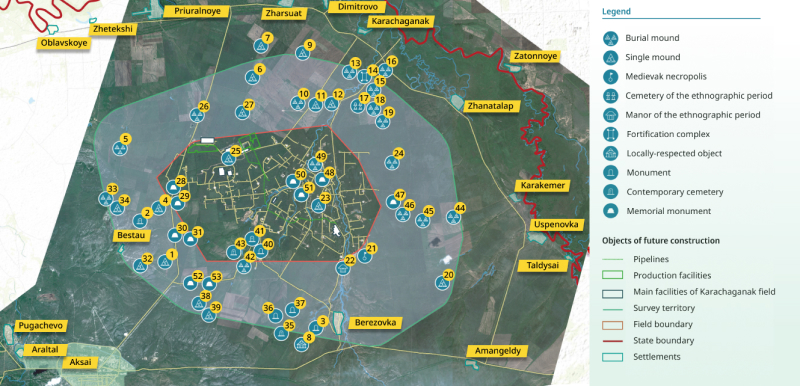Sustainability
- Home
- /
- Sustainability
- /
- Environmental monitoring
- /
- Sanitary protection zone
- /
- Research on preservation of historical and cultural heritage sites
KPO SUCCESS STORY: | |
Context / short description of an issue: | In the longer term of further development of the Karachaganak Field (KOGCF) KPO plans enhancement of the current production infrastructure, construction of new assets including the planting of new trees as part of the project for improvement of the sanitary protection zone (SPZ). KPO supported survey works on detecting and studying historical and cultural heritage sites within the KOGCF and its SPZ areas in 2019 in order to complete the Plan on further development of SPZ in the period 2018-2026. Survey works were implemented in 2019. |
Goal: |
|
Solution / actions: | Archaeological survey works were conducted in order to identify historical sites, to clarify their characteristics and actual location, to give recommendations on their security and/or study. The Kazakhstan Agency of Applied Ecology LLC («KAPE» LLC) and the Archaeological Expedition LLP carried out the activities. Archaeological exploration was held on the basis of the Law of the Republic of Qazaqstan ‘On the protection and use of historical and cultural heritage sites’ and was roughly divided into three stages: Preliminary stage included the preliminary activities with historical and scientific resources and the list of monuments from the National Registry, exploration of the topographic area maps and space images. On-field stage included:
Final stage included office studies of received data, analysis and interpretation of detected HCH sites. In the course of the archaeological exploration the following 53 HCH sites in total were detected and documented:
Most part of the detected archaeological monuments are presented by funeral monuments of the early iron century and belong to the Sarmatian group of tribes, two monuments relate to the middle ages and three belong to the ethnographic period. |
Result: | In result of the research, it was established that the most historical and cultural heritage sites were destroyed under environmental factors and were influenced by human activities, roads construction, tree planting, etc. The additional technogenic factor is the Field’s modern infrastructure (highways, communication, etc.). It is worth noting that 12 archaeological monuments are under threat and were recommended to the full archaeological research in order to preserve their historical and cultural potential.
|
Scheme of the location of identified historical & cultural heritage sites and sacred monuments of local importance
(click on image to enlarge)





